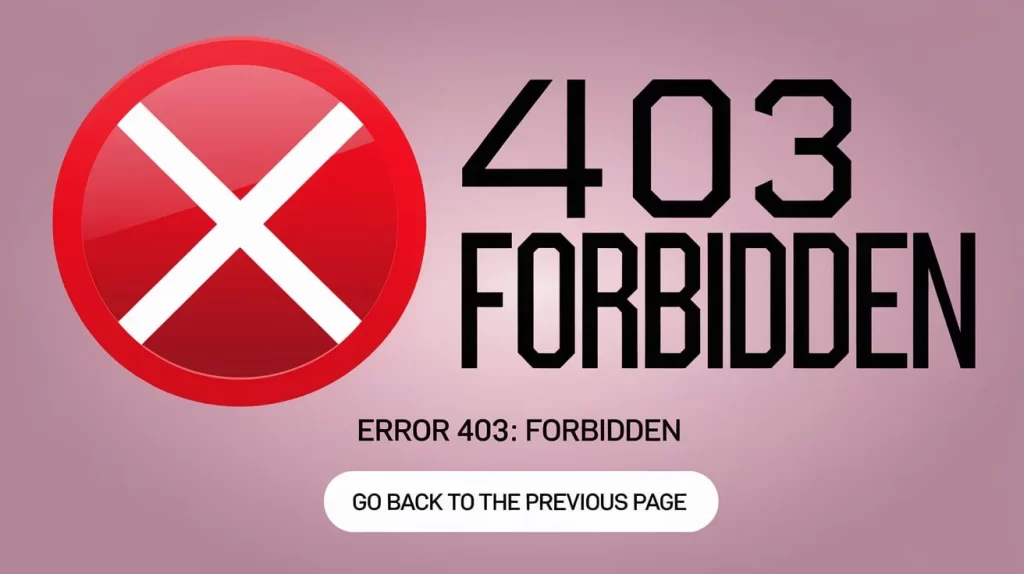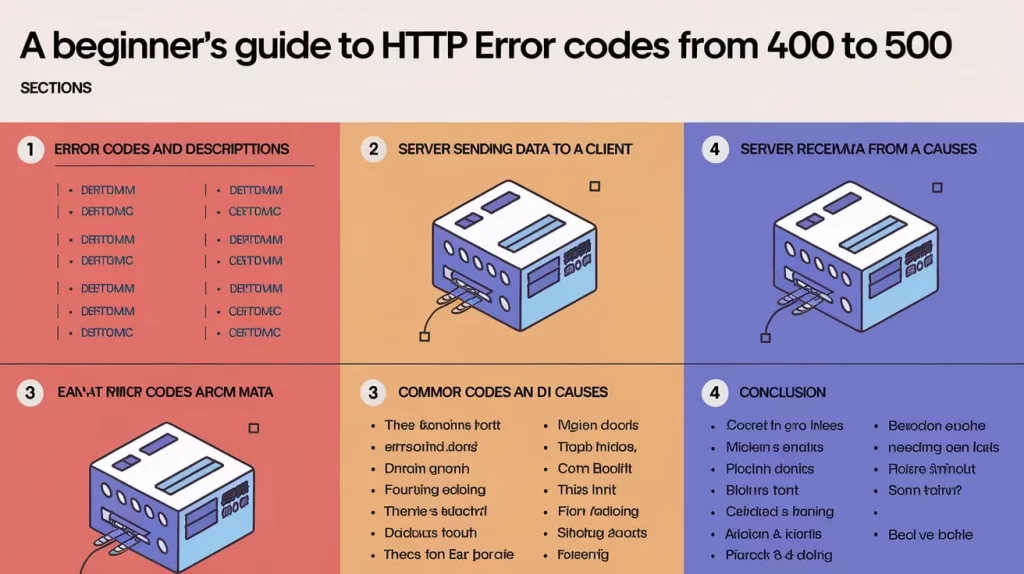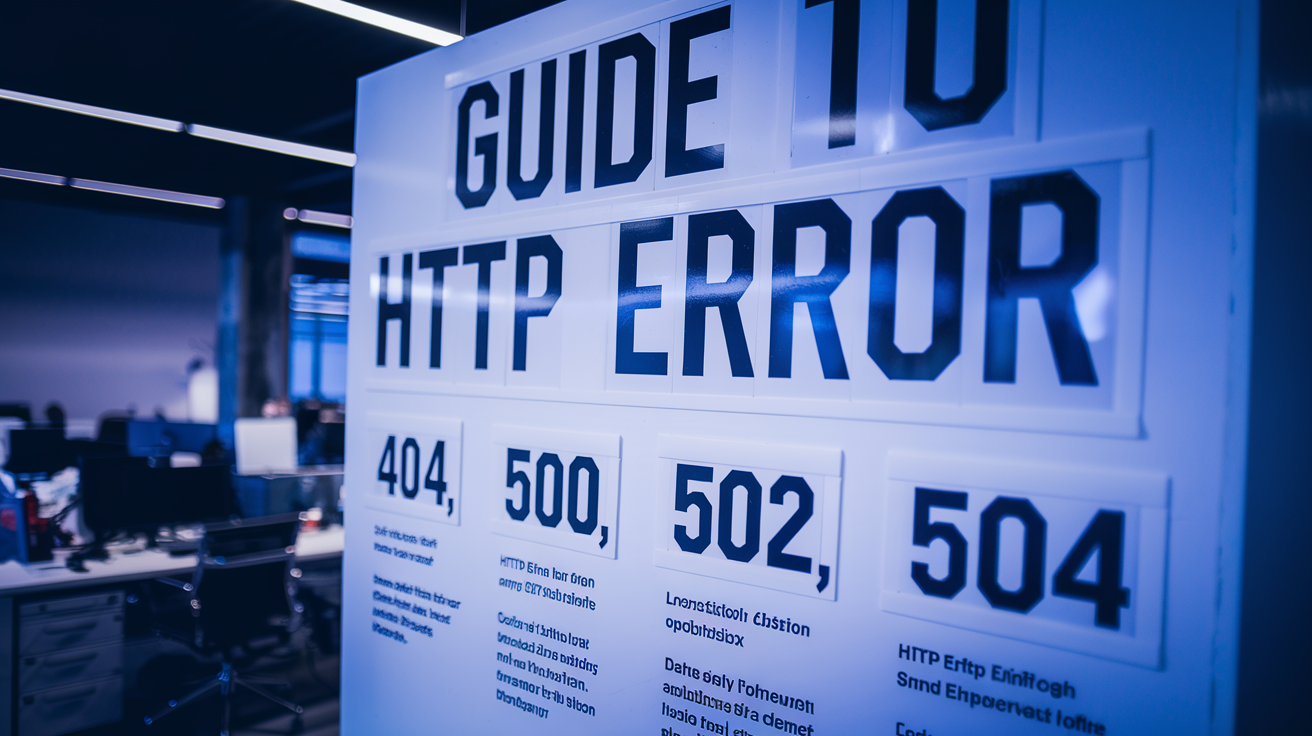When navigating the web, it’s common to encounter HTTP error codes. These codes are integral to the communication between web browsers and web servers, helping to determine if a request was successful or if something went wrong. Although many users are familiar with some of the common errors, like 404 Not Found, others are more complex and serve specific roles in ensuring secure and functional web environments. We’ll take a closer look at HTTP error codes, focusing specifically on the 4xx and 5xx ranges, which deal with client-side and server-side errors, respectively. We’ll provide a detailed explanation of HTTP status 403, its causes, and its significance, alongside other common errors in the 4xx and 5xx ranges. By the end of this guide, both beginners and experienced web users will understand the meaning behind these error codes and how to interpret them when encountered.
Overview of HTTP Error Codes
HTTP status codes are part of the Hypertext Transfer Protocol (HTTP), which is used by web browsers to request data from web servers and to receive responses. Each status code is a three-digit number that represents the result of the server’s attempt to process the request. These codes are broken down into five categories based on the first digit:
- 1xx: Informational responses (e.g., 100 Continue).
- 2xx: Success (e.g., 200 OK).
- 3xx: Redirection (e.g., 301 Moved Permanently).
- 4xx: Client errors (e.g., 404 Not Found).
- 5xx: Server errors (e.g., 500 Internal Server Error).
In this article, we will focus on the 4xx and 5xx error categories, which indicate issues either on the client side or the server side.

What Are HTTP Error Codes?
HTTP error codes are a vital part of web communication. They inform users and administrators about the outcome of their requests. These codes follow a standardized system, helping users understand what went wrong when accessing a website or resource. They are essential for troubleshooting and ensuring that websites operate smoothly.
Each HTTP status code belongs to one of five categories:
- 1xx – Informational: These codes provide information about the request’s status. They’re rarely encountered by the average user.
- 2xx – Success: These codes indicate that the request was successfully processed. The most common is 200 OK, meaning the request succeeded.
- 3xx – Redirection: These codes inform the client that additional action is required, such as redirecting the user to a different URL (e.g., 301 Moved Permanently).
- 4xx – Client Errors: These errors indicate that there is an issue with the request from the client’s side (e.g., 404 Not Found, 401 Unauthorized).
- 5xx – Server Errors: These codes suggest that the server failed to fulfill a valid request, often due to server-side problems (e.g., 500 Internal Server Error, 502 Bad Gateway).
Detailed Look at 4xx Errors Client-Side Errors
The 4xx class of HTTP error codes represents client-side errors. These errors are caused by the client’s request, which may be malformed, unauthorized, or lacking necessary permissions. Let’s explore some of the most common 4xx errors.
Overview of 4xx Errors (400, 401, 403, etc.)
- 400 Bad Request: This error occurs when the server cannot understand the request due to malformed syntax. It typically happens when the request is invalid or corrupt.
- 401 Unauthorized: The 401 error means the client must authenticate itself to access the requested resource. It’s commonly encountered when a user has not logged in or provided incorrect credentials.
- 403 Forbidden: A 403 Forbidden error occurs when the server understands the request but refuses to authorize it. This happens even if the client has provided the correct credentials but lacks permission to access the resource.
- 404 Not Found: This error appears when the server cannot find the requested resource. It’s often seen when a page has been deleted or the URL is incorrect.
Each of these errors serves a different purpose. 400 indicates an issue with the request’s syntax, while 401 suggests that authentication is needed. 403 is a crucial security feature, as it blocks unauthorized access to sensitive resources. Finally, 404 typically means that the requested resource doesn’t exist.

Understanding the 403 Forbidden Error
The 403 Forbidden error is a specific type of client-side error. It indicates that the server has understood the request but is refusing to fulfill it. The primary difference between 401 Unauthorized and 403 Forbidden is that with a 401 error, the server is essentially saying, “You need to log in or provide valid credentials,” whereas the 403 error implies, “You do not have permission to access this resource, even if you provide valid credentials.”
Why Does the 403 Forbidden Error Occur?
The 403 Forbidden error can happen for several reasons:
- Incorrect File or Directory Permissions: A website might have misconfigured permissions on certain files or directories, causing the server to block access.
- IP Blocking or Geo-Restrictions: Some websites block specific IP addresses or entire regions from accessing certain resources.
- Access Control Configuration: In certain cases, server settings like .htaccess or nginx.conf files might prevent access to specific parts of the website.
- Misconfigured Firewalls: A firewall could be set up to block requests based on certain parameters like location or request type, causing the server to return a 403 error.
How 403 Differs from Other 4xx Errors
Unlike 400 Bad Request, which indicates a malformed request, the 403 error is a clear and deliberate refusal by the server to allow access. It is also different from the 401 Unauthorized error, which usually means that the client needs to authenticate itself. While 401 errors can be fixed by providing correct credentials, 403 errors typically require changes in the server’s access control configurations.

What Are 5xx Errors? Server-Side Problems
While 4xx errors are client-side errors, 5xx errors indicate server-side issues. These errors happen when the server is unable to process a valid request, often due to a problem with the server itself.
Suggested Posts:
An Introduction to Server-Side Errors
- 500 Internal Server Error: This is one of the most common 5xx errors. It means that the server encountered an unexpected condition that prevented it from fulfilling the request.
- 502 Bad Gateway: This error occurs when a server acting as a gateway or proxy receives an invalid response from the upstream server.
- 503 Service Unavailable: This error occurs when the server is temporarily unable to handle the request, often due to being overloaded or down for maintenance.
These errors are typically out of the client’s control and may require the website’s administrator to resolve them by troubleshooting server configurations, checking server logs, or restarting server processes.
Key Takeaways
HTTP error codes are crucial for understanding the status of a request made to a server. By recognizing the significance of 4xx errors, especially the 403 Forbidden error, users and webmasters can troubleshoot issues more effectively. The 403 error serves an essential role in website security, ensuring that unauthorized users are blocked from accessing sensitive resources.
While 403 errors are a client-side issue, they are a key tool in protecting a website from unauthorized access. By understanding and addressing these errors, along with server-side issues like 5xx errors, web administrators can create more secure and efficient websites.
- HTTP error codes communicate the status of requests between web browsers and servers.
- 4xx errors are client-side issues, with 403 Forbidden specifically indicating a lack of permissions, even if the user is authenticated.
- 5xx errors are server-side issues, often indicating problems with the server’s ability to process a request.
- Properly addressing 403 errors can enhance website security by preventing unauthorized access to sensitive resources.
- Both users and webmasters should be familiar with these errors to ensure smooth troubleshooting and optimal site performance.
Frequently Asked Questions (FAQs)
What does the 403 Forbidden error mean?
The 403 Forbidden error means that the server understands the request, but the server refuses to allow the client to access the requested resource due to insufficient permissions.
What causes a 403 error?
A 403 error can be caused by misconfigured file permissions, IP blocking, access control settings, or issues with the server’s .htaccess file.
How is the 403 Forbidden error different from 401 Unauthorized?
The 401 Unauthorized error means the client needs to authenticate, while 403 Forbidden means the client is not allowed access, even with correct authentication credentials.
What is the difference between a 4xx and 5xx error?
A 4xx error is a client-side issue (e.g., malformed requests, lack of permissions), while a 5xx error indicates a server-side issue (e.g., server overload, misconfigurations).
How do I fix a 403 Forbidden error?
To fix a 403 error, check file permissions, ensure proper authentication, and review server settings like .htaccess or firewall configurations.
